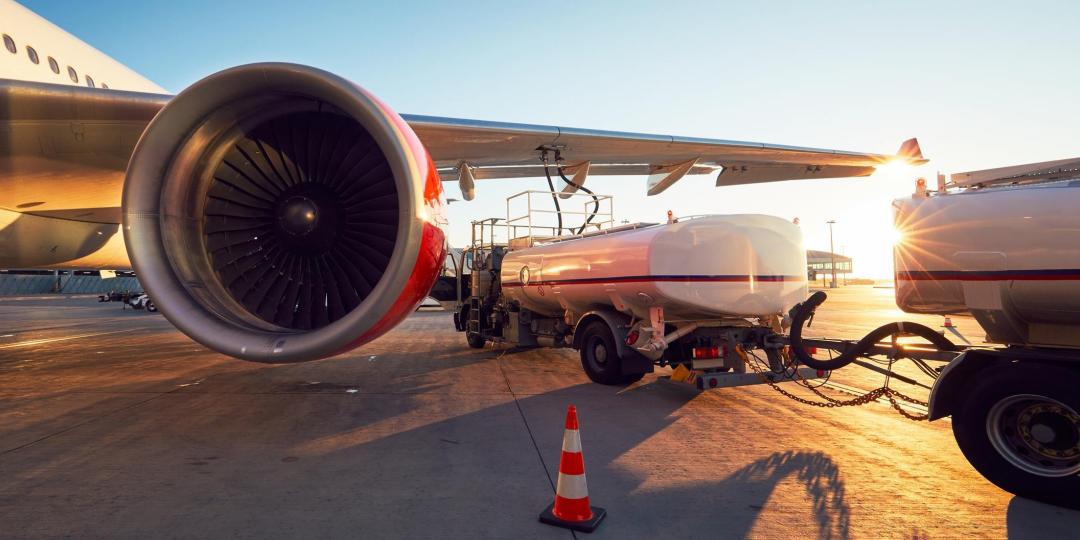In South Africa’s dynamic aviation environment, the cost of air travel has climbed markedly over the past two years. While a reduction in the number of airlines has been cited as a cause, the true culprit was the soaring price of jet fuel, said domestic and regional airline, FlySafair.
“Jet A1, the lifeblood of jet aircraft, is much like diesel in its pricing freedom. Derived from crude oil, its cost echoes the movements of Brent Crude oil on the global stage. For airlines, fuel is not just another expense; it represents a substantial portion of a flight's direct operating costs, making airlines particularly vulnerable to its price volatility,” the airline said in a statement.
FlySafair added that approximately 60% of its direct operating cost of a flight was attributed to fuel alone.
Airlink CEO and MD, Rodger Foster, told Tourism Update that jet fuel was the biggest cost item for most airlines and Airlink was no exception. He added that Airlink was continually searching for additional cost efficiencies, but only where they could be achieved without compromising safety, reliability and its unique service offering.
‘Relies heavily on imported fuel’
Because jet fuel was no longer locally produced at the volumes it was previously, the industry relied heavily on imported fuel, said Foster.
“Not only are costs affected by the weak rand/US dollar exchange rate, but the additional logistics costs of getting the fuel to our airports mean that the prices we pay are at a higher premium.”
He added that any additional charge levied on top of this, such as duties on transporting fuel through Transnet’s multi-product pipeline from the Port of Durban to OR Tambo International, also had to be covered.
“Airlink, like most airlines, can only absorb these increased costs up to a point before sharing some of the burden through its fares,” Foster said.
A spokesperson for low-cost carrier Lift agreed that, although jet fuel prices played a major role in flight costs, it was not the sole driver of ticket pricing.
“Whilst the price of jet fuel has increased significantly over the last few years, our focus remains on optimising operational efficiency to mitigate this impact. Additionally, we advocate for increased local production of jet fuel and storage facilities at the airports as this is essential to mitigate reliance on costly imports and prevent supply disruption,” Lift’s spokesperson said.
Comair’s exit
2022 presented a turbulent chapter for South African aviation on the back of the COVID pandemic. The exit of Comair and its substantial seat capacity – a full 35% of the domestic market – triggered a significant supply shock.
Comair's departure, while challenging, was a double-edged sword for surviving airlines. It allowed them to achieve prices necessary to weather the rising fuel costs temporarily.
“However, this led to public perception issues, with airlines viewed as taking advantage of consumers through inflated pricing thanks to the exit of Comair,” FlySafair noted.
Demand ‘tidal’
Foster said he was not sure whether fares could be lowered without jeopardising the economic sustainability and viability of airlines, particularly as the industry was emerging from a period of unsustainability caused by oversupply and a concomitant downward pressure in fares.
“Responsible airlines, like Airlink, cautiously manage capacity as the demand could be described as ‘tidal’, i.e. it rises at certain times of the day/days of the week/weeks of the year, but it recedes at other times, days and periods of the year.”
Foster believes it would be ‘suicidal’ to sell inventory at below-average fares.
“The travelling public wants choice and Airlink wants to be able to offer our customers a range of choices in a vibrant and competitive market, but can only do so if Airlink and all its competitors are economically sustainable and compete on a level playing field.”
The domestic passenger market today
Equilibrium has returned to South Africa's domestic passenger market. From the pre-pandemic era to December 2023, for example, FlySafair achieved a 94% recovery in seat availability.
“The industry landscape has transformed, with five airline companies still contesting the market but now flying under singular brand banners compared with the previous seven,” the airline said.
In 2019, the South African Passenger Airline Market was contested by South African Airways and its low-cost subsidiary Mango Airlines, Comair (which owned the local British Airways franchise and kulula.com), CemAir, FlySafair, and Airlink.
In comparison, the market is currently contested by South African Airways, FlySafair, Lift, CemAir, and Airlink.
Foster highlighted that when travellers converted local fares into US dollars (the aviation industry’s baseline currency), it was clear that, on average, over the past 35 years, travellers had paid far less for air tickets in southern Africa than their counterparts in North America, Europe, Australasia and South-East Asia.
“However, we are well aware that in rands, fares have risen and will remain under pressure in the face of elevated fuel prices, rising consumer inflation, negligible economic growth and the weak rand/strong US dollar, pound sterling and euro,” Foster concluded.
























